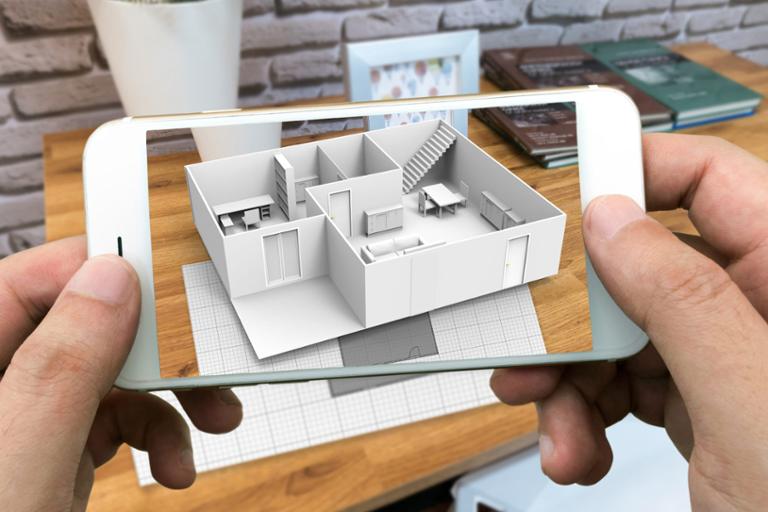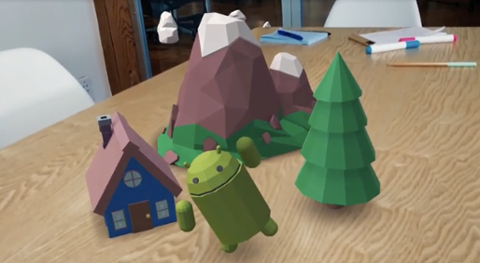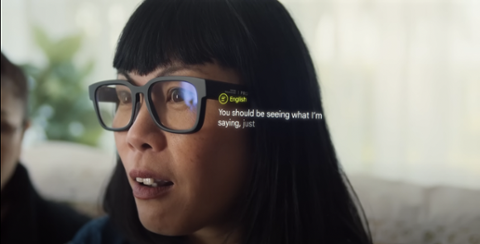
Just in time for Mobile World Congress, Google is releasing version 1.0 of ARCore, its augmented reality (AR) platform for Android devices. Unveiled in August 2017, ARCore is Google’s answer to Apple’s ARKit for iOS devices. The core technology for both platforms identifies flat surfaces to display virtual 3D objects on. Unlike virtual reality (VR), AR lives entirely within the frame of your smartphone without need for bulky headsets. Version 1.0 of ARCore officially brings the software out of ‘preview.' Developers are now free to publish AR apps to the Google Play app store, and Google is promising ARCore will work on over 100 million Android devices. From Google:
It works on 13 different models right now (Google’s Pixel, Pixel XL, Pixel 2 and Pixel 2 XL; Samsung’s Galaxy S8, S8+, Note8, S7 and S7 edge; LGE’s V30 and V30+ (Android O only); ASUS’s Zenfone AR; and OnePlus’s OnePlus 5). And beyond those available today, we’re partnering with many manufacturers to enable their upcoming devices this year, including Samsung, Huawei, LGE, Motorola, ASUS, Xiaomi, HMD/Nokia, ZTE, Sony Mobile, and Vivo.
ARCore also has some enhanced features, specifically better environmental awareness. Google says ARCore will identify flat surfaces such as tables, and knows “textured surfaces” such as posters, furniture, books, and toy boxes. ARCore is now supported in the Android Studio emulator, too. Launching ARCore alone won’t bring developers into Google's AR fold. Beyond the technological feat, we have to wonder if ARCore will drive the AR field forward in any meaningful way. Studies show augmented reality has yet to re-frame the app economy, so there’s little financial gain for developers interested in exploring AR... at least, not yet. Then again, we’ve only seen some of AR's potential reach; Apple’s ARKit is the benchmark for mobile AR at this point, and it's early days for the technology. While Google's AR platform has the potential reach and ability to accelerate augmented reality for mobile, Android’s fragmentation looms as a real issue. And it's not just fragmentation in terms of Android versioning; hardware fragmentation plays a big part here. ARCore apps that don’t find their footing in the marketplace could be more easily dropped by their developers under the guise of "fragmentation issues." Google is partnering with Chinese OEMs to bring ARCore to China, a massive market, but this may also spin the fragmentation issue into overdrive. ARCore’s new ability to identify unique surfaces (such as posters) also trails ARKit, which launched the same new features about a month ago. The pitch for AR involves ‘living’ movie posters, AR interior decorating and – well, this:
I reenacted a famous scene from 'The Ring' to bring #horror movies to life in AR#madewithunity #ARKit pic.twitter.com/fRU2ul56ki
— Abhishek Singh (@shekitup) February 21, 2018
ARCore’s stable release may be timely for partners, but we’re looking to Google I/O later this year for more tooling and guidance for AR on Android. Specifically, we’d like to see if Google introduces ARCore for Kotlin, which might be the company's strongest indicator yet it’s ready to distance itself from Java long-term. Right now, AR is nascent, so don't feel bad if you're not excited about it yet.

